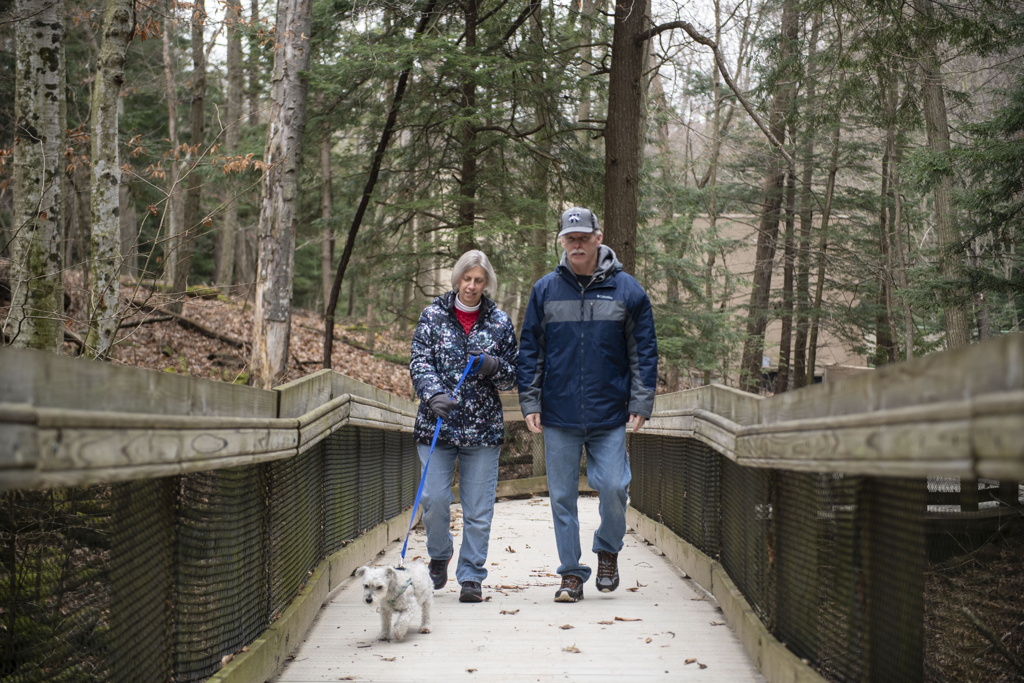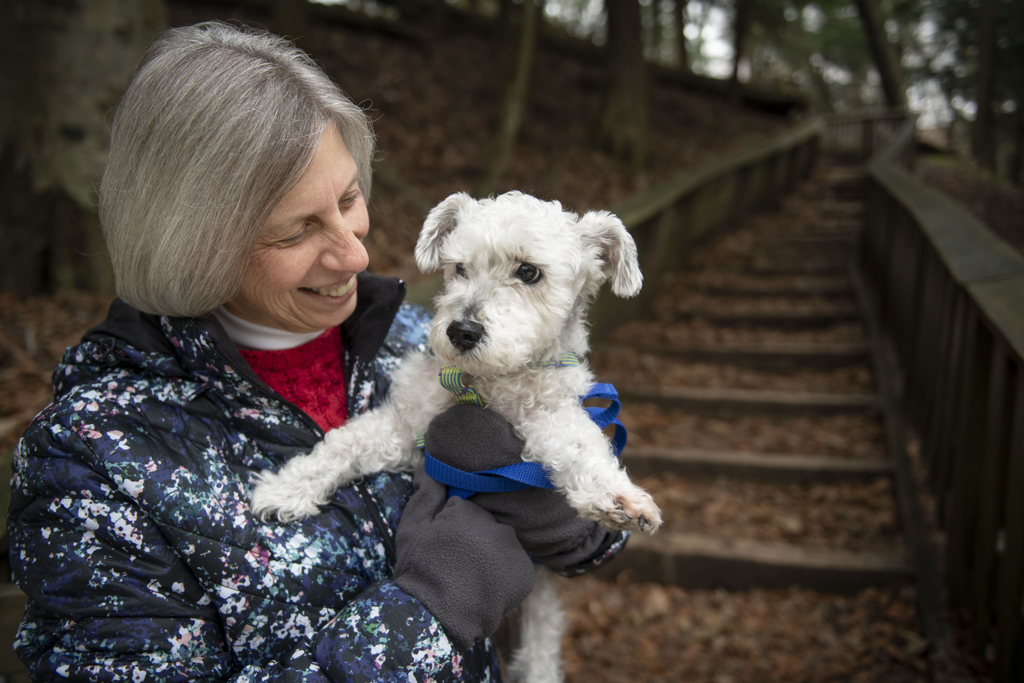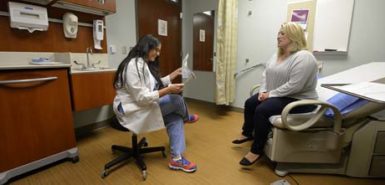Susan Cloutier, 61, felt a stab of pain when bending over. Other times, she felt the pain when she straightened up.
“It was weird,” she said. “It was a sharp pain for a moment, but then it disappeared, so it was easy to put off checking into it.”
Cloutier, a resident of Muskegon, keeps a busy schedule working in human resources at AgeWell Services. She procrastinated on seeing her doctor.
“I also had periodic incontinence, but that was manageable,” Cloutier said. “And spotting now and then, although I don’t have a period anymore, I shrugged that off, too.”
Cloutier had an idea what caused the pain and the incontinence.
It all began about 20 years ago, when she gave birth to her son.
“I have two sons, Jacob and Jared, 16 months apart,” Cloutier said. “I had had three miscarriages, all at six weeks, so I thought I wouldn’t be able to have a baby—but then I became pregnant with Jared while we arranged an adoption of Jacob from Guatemala.”
Cloutier traveled to Guatemala with her husband to pick up their new son when she was six weeks along in her pregnancy. Happily, this time there was no miscarriage.
“When Jared was born, he was 10 1/2 pounds and 23 inches long,” Cloutier smiled. “Yes, big. And that’s when the incontinence began.”
A new procedure
It wasn’t long after her baby’s birth that Cloutier had a mesh sling put in to eliminate the incontinence she experienced.
A sling is usually made out of mesh or human tissue, shaped somewhat like a hammock. Through a surgical procedure, a surgeon places it beneath the urethra to lift and support it and around the neck of the bladder to prevent leaks.
“It was a relatively new procedure back then,” Cloutier said.
A second procedure Cloutier had done is called thermal ablation. This procedure uses heat to singe away the inner lining of the uterus. The heat comes from a balloon filled with hot water that is inserted into the uterine cavity.
“I had that done to stop the spotting when I was 42,” Cloutier said. “I knew by then I wouldn’t want to have any more children, as I was 39 when Jared was born.”
As years went by, however, Cloutier began to feel those stabs of pain. Intercourse, too, had become excruciatingly painful.
“Sure, I knew it was time to see a doctor, and I did see a urologist, but I had a fear of ending up with a bladder bag, and so I lived with the pain instead,” she said.
Cloutier listened to her doctor’s suggestions but decided not to follow through when her urologist moved away. Her fears got the best of her and the opportunity to procrastinate became too tempting.
But the pain didn’t go away. The spotting didn’t stop.
No more procrastinating
In fact, the spotting increased, and when one day Cloutier experienced a gush of blood that wouldn’t stop even into the next day, she understood she could no longer avoid facing up to things.
“Susan came to see me in April 2019,” said Kirsten Phillips, MD, obstetrician and gynecologist at Spectrum Health. “She came because of post-menopausal bleeding. Her mesh sling was eroding, and since she had already gone through menopause, there shouldn’t have been any more bleeding.”
To confirm Cloutier’s bleeding was caused by an eroding mesh sling and nothing else, Dr. Phillips had an ultrasound done.
She hoped for a clean image of Cloutier’s uterus.
Instead, the ultrasound showed a hyperechoic mass at the top of Cloutier’s uterus.
“A hyperechoic mass is an area that looks brighter on the ultrasound because it reflects more ultrasound waves,” Dr. Phillips said. “We needed to find out what it was. Fibroids? Calcifications? We needed to rule out cancer.”
Surgery would provide answers. Dr. Phillips consulted with Nima Shah, MD, a urogynecologist specializing in female pelvic medicine and reconstructive surgery.
The two surgeons accompanied Cloutier into the operating room in May 2019. Dr. Phillips performed a dilation and curettage and hysteroscopy first.
“During a hysteroscopy, a tiny camera is inserted into the uterus to examine the lining to see what might be causing the bleeding,” Dr. Phillips said. “Although we did a biopsy to confirm, we did not see cancer, only scar tissue. Woo-hoo!”
Dr. Phillips cheered at the excellent outcome. With her part of the surgery concluded, Dr. Shah stepped in.
Better outcomes
“When I examined Susan, I did find that a section of the mesh was exposed,” Dr. Shah said. “A full centimeter was exposed in the vagina wall, and that was causing the bleeding. In surgery, I located the area of mesh exposure, removed the exposed mesh along with the border of tissue around it so that the inflammation was gone and the skin edges would heal well.”
Mesh exposure can happen in up to 3% of women who have mesh slings. For most women, the sling is an effective and safe option, Dr. Shah said.
“In these patients, it is important to see a female pelvic medicine and reconstructive surgeon, because they are trained in providing care for this type of issue,” she continued.
“Both Dr. Phillips and Dr. Shah made me feel at peace with the procedure,” Cloutier said. “They were both phenomenal, kind and compassionate—I felt confident going into surgery. And after recovery, there was no more incontinence, no more bleeding, and no more pain.”
Cloutier has since resumed the activities she loves.
Now an empty nester, she and her husband are once again enjoying hiking and camping, spending time in the great outdoors.
“Don’t suffer in silence,” Dr. Phillips concludes. “And don’t ever ignore postmenopausal bleeding. We can do something to help—and two heads are better than one. When physicians work together, it means better outcomes for our patients.”














 /a>
/a>
 /a>
/a>
 /a>
/a>